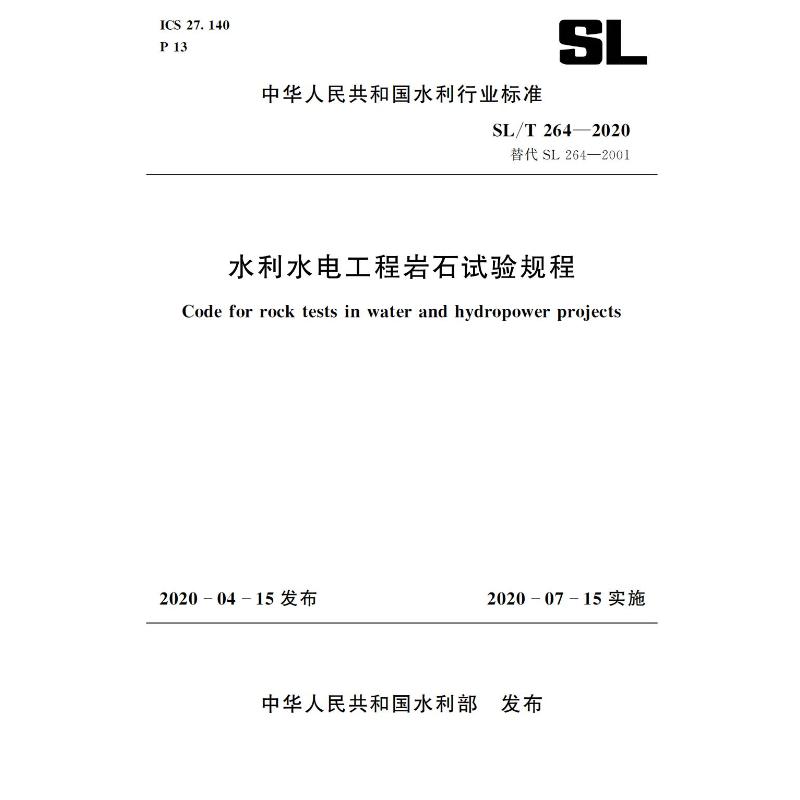暂无商品咨询信息 [发表商品咨询]



本书基于对野生东北虎种群和栖息地生态变化特征的长期研究,收集整理和分析了大量的野外和实验室数据,综合应用物种分布模型理论、食物选择理论、上行效应理论、动物行为学理论、分子生态学理论、保护生物学土地分享和土地抽取理论、生态阈值理论,以及栖息地优先区等级模型确定技术、数码足迹影像个体识别技术以及东北虎个体花纹识别技术等,较为全面地揭示了中国东北虎种群和栖息地的动态规律,将有效地促进中国野生东北虎种群和栖息地的精准管理策略的制定和实施。
目录
章 东北虎栖息地分布的环境因子驱动 1
1.1 引言 1
1.2 材料与方法 2
1.2.1 研究区域 2
1.2.2 东北虎种群数据 3
1.2.3 环境变量和人为干扰变量 4
1.2.4 空间自相关检测 5
1.2.5 统计分析 6
1.3 结果 7
1.3.1 长白山模型 7
1.3.2 完达山模型 10
1.3.3 分区比较和定量化响应 12
1.4 讨论 13
1.4.1 环境因素的影响 13
1.4.2 人为干扰的影响 14
1.4.3 空间自相关效应 15
1.4.4 保护意义 16
1.5 本章小结 17
参考文献 17
第2章 东北虎保护中的生态与社会的协同效应 22
2.1 引言 22
2.2 研究方法 24
2.2.1 森林管理数据的收集与分析 24
2.2.2 东北虎和东北豹种群大小与生境分布 27
2.3 结果 28
2.4 讨论 33
2.5 本章小结 37
参考文献 38
第3章 有蹄类动物死亡原因和生境质量评价综合分析 40
3.1 引言 40
3.2 研究地区概况 41
3.3 数据收集和分析方法 42
3.3.1 有蹄类动物死亡点数据来源 42
3.3.2 死亡原因分析 42
3.3.3 有蹄类动物出现点数据来源 42
3.3.4 生境选择分析 42
3.4 研究结果 45
3.4.1 有蹄类动物死亡原因 45
3.4.2 生境选择分析 45
3.4.3 生境评价 45
3.5 讨论 48
3.5.1 有蹄类动物死亡原因及比例 48
3.5.2 生境选择和质量评价 48
3.6 本章小结 50
参考文献 50
第4章 人为干扰对森林植被、东北虎及其猎物的影响 54
4.1 引言 54
4.2 研究地区与方法 57
4.2.1 研究区域 57
4.2.2 数据收集 57
4.2.3 数据分析 58
4.3 结果 59
4.3.1 人为干扰对植被的影响 59
4.3.2 人为干扰对猎物的影响 63
4.3.3 人为干扰对东北虎的影响 63
4.4 讨论 63
4.4.1 放牧的影响 63
4.4.2 道路的影响 64
4.4.3 人参种植的影响 65
4.4.4 GAM、GLM、SEM的模型比较 66
4.5 结论 66
4.6 本章小结 66
参考文献 67
第5章 中国珲春地区与俄罗斯Primorskii Krai西南部东北虎食性分析的比较 70
5.1 引言 70
5.2 材料与方法 71
5.2.1 研究区域 71
5.2.2 野外研究方法 72
5.2.3 粪便分析 72
5.2.4 数据分析 73
5.3 结果 74
5.4 讨论 77
5.5 本章小结 79
参考文献 79
第6章 野生和圈养雌性东北虎繁殖参数的比较 82
6.1 引言 82
6.2 材料与方法 83
6.2.1 研究种群 83
6.2.2 数据分析 84
6.3 结果 84
6.3.1 圈养东北虎和野生东北虎种群的繁殖参数 84
6.3.2 幼崽死亡率 85
6.3.3 繁殖的季节性 85
6.3.4 幼崽死亡后再次受孕雌虎的繁殖特征 87
6.4 讨论 87
6.5 本章小结 88
参考文献 89
第7章 东北虎对自然猎物的偏好本能及其与个性关系的探测研究 91
7.1 引言 91
7.2 材料与方法 92
7.2.1 实验动物 92
7.2.2 实验设备 92
7.2.3 刺激物 92
7.2.4 猎物识别测试 93
7.2.5 个性评估 93
7.2.6 数据分析 95
7.3 结果 97
7.3.1 对自然猎物视觉刺激的偏好反应 97
7.3.2 对自然猎物听觉刺激的偏好反应 98
7.3.3 对自然猎物嗅觉刺激的偏好反应 99
7.3.4 对自然猎物的本能偏好及其与个性特征的关系 100
7.4 讨论 101
7.5 本章小结 103
参考文献 103
第8章 利用东北虎粪便DNA进行基因分型的风险评估 106
8.1 引言 106
8.2 材料与方法 107
8.2.1 取样 107
8.2.2 DNA提取 107
8.2.3 微卫星数据分析 108
8.2.4 基因分型的正确性评估 108
8.2.5 使用粪便样本评估种群遗传学参数 109
8.3 结果 109
8.3.1 微卫星位点分型正确性评估 109
8.3.2 基因分型误差对估算种群遗传学参数的影响 109
8.4 讨论 113
8.5 本章小结 114
参考文献 115
第9章 应用雪地足迹影像进行东北虎的性别鉴定 117
9.1 引言 117
9.2 材料与方法 118
9.2.1 名词定义 118
9.2.2 足迹照片数据采集和分析方法 119
9.2.3 圈养东北虎的足迹影像采集 119
9.2.4 野生东北虎的足迹影像采集 121
9.2.5 足迹几何轮廓的提取 122
9.2.6 数据分析 122
9.3 结果 123
9.3.1 圈养东北虎的性别判别模型 123
9.3.2 基于足迹识别技术对野生东北虎进行性别鉴定 124
9.4 讨论 125
9.4.1 采集和测量足迹 125
9.4.2 雪地足迹数据的客观性 125
9.4.3 样本量和建模方法对性别判别的影响 125
9.4.4 管理启示 126
9.5 本章小结 126
参考文献 127
0章 中国东北虎栖息地等级保护优先区域和廊道确定的适宜性模型技术 129
10.1 引言 129
10.2 研究方法 130
10.2.1 数据收集与栖息地斑块确定 130
10.2.2 栖息地廊道识别 134
10.2.3 优化算法模型、适宜栖息地斑块与廊道内优先核心栖息地识别 134
10.3 结果 135
10.3.1 中国东北虎种群和栖息地分布 135
10.3.2 东北虎栖息地模拟及最小需求面积 137
10.3.3 等级优先保护区域确定 139
10.3.4 潜在保护功能的比较 142
10.4 讨论 144
10.5 本章小结 145
参考文献 146
1章 东北虎种群和栖息地精准管理的生态阈值 148
11.1 引言 148
11.2 基于上行效应确定东北虎保护中的生态阈值 150
11.2.1 气候和极端天气引起的阈值效应 150
11.2.2 栖息地丧失和人为干扰引起的阈值效应 151
11.2.3 植被的生态阈值 153
11.2.4 猎物或食草动物的生态阈值 153
11.2.5 东北虎和东北豹的共存阈值 155
11.3 未来生态阈值研究应用和面临的挑战 155
11.4 本章小结 157
参考文献 158
2章 东北虎精准保护管理工作中的挑战、机遇与举措 163
12.1 引言 163
12.2 顶层设计、统一规划 164
12.3 专家咨询、科学规范 166
12.4 创新举措、人虎和谐 168
12.5 本章小结 169
参考文献 169
Contents
Chapter 1 Environmental factors drive the habitat distribution of Amur tiger 171
1.1 Introduction 171
1.2 Materials and methods 172
1.2.1 Study area 172
1.2.2 Amur tiger population data 173
1.2.3 Environmental and anthropogenic variables 174
1.2.4 Spatial autocorrelation examination 176
1.2.5 Statistical analysis 177
1.3 Results 178
1.3.1 Changbaishan model 178
1.3.2 Wandashan model 182
1.3.3 Subregional comparison and quantitative responses 184
1.4 Discussion 186
1.4.1 Effects of environmental factors 186
1.4.2 Effects of anthropogenic factors 187
1.4.3 Effects of spatial autocorrelation 188
1.4.4 Conservation implications 189
1.5 Summary 190
References 190
Chapter 2 The synergy between ecology and society in Amur tiger conservation 195
2.1 Introduction 195
2.2 Methods 197
2.2.1 Collection and analysis of forest management data 197
2.2.2 Population size and habitat distribution of Amur tiger and Amur leopard 199
2.3 Results 202
2.4 Discussion 207
2.5 Summary 211
References 212
Chapter 3 An integrated analysis of the causes of ungulate mortality in the Wandashan Mountains (Heilongjiang Province, China) and an evaluation of habitat quality 215
3.1 Introduction 215
3.2 Study area and background 216
3.3 Materials and methods 217
3.3.1 Mortality data 217
3.3.2 Cause of mortality in the three ungulate species 217
3.3.3 Survey design and data collection 218
3.3.4 Analysis of habitat selection 218
3.4 Results 221
3.4.1 Causes of mortality 221
3.4.2 Habitat selection based on the occurrence and mortality locations of ungulate 222
3.4.3 Habitat evaluation 222
3.5 Discussion 224
3.5.1 Causes and percentage of mortality 224
3.5.2 Habitat selection and quality evaluation 225
3.6 Summary 227
References 227
Chapter 4 Effects of human disturbance on vegetation, prey and Amur tigers in Hunchun Nature Reserve, China 231
4.1 Introduction 231
4.2 Methods and techniques 234
4.2.1 Study area 234
4.2.2 Data collection 234
4.2.3 Data analysis 236
4.3 Results 236
4.3.1 Human disturbance on vegetation 238
4.3.2 Human disturbance on prey 240
4.3.3 Human disturbance on Amur tigers 241
4.4 Discussion 241
4.4.1 Effects of grazing 241
4.4.2 Effects of roads 243
4.4.3 Effects of ginseng planting 243
4.4.4 Results discrimination of GAMs, GLMs and SEMs 244
4.5 Conclusions 244
4.6 Summary 244
References 245
Chapter 5 A comparison of food habits and prey preferences of Amur tiger at the southwest Primorskii Krai in Russia and Hunchun in China 248
5.1 Introduction 248
5.2 Materials and methods 249
5.2.1 Study area 249
5.2.2 Field research methods 250
5.2.3 Scat analysis 251
5.2.4 Data analysis 251
5.3 Results 252
5.4 Discussion 256
5.5 Summary 258
References 258
Chapter 6 A comparison of reproductive parameters of female Amur tiger in the wild and captivity 261
6.1 Introduction 261
6.2 Materials and methods 262
6.2.1 Study population 262
6.2.2 Data analysis 263
6.3 Results 263
6.3.1 Reproductive parameters of captive and wild Amur tigers population 263
6.3.2 Cub mortality 264
6.3.3 Seasonality of reproduction 264
6.3.4 Reproductive characteristics of females after losing cubs 267
6.4 Discussion 267
6.5 Summary 268
References 269
Chapter 7 Innate preference for native prey and personality implications in captive Amur tigers 270
7.1 Introduction 270
7.2 Materials and methods 271
7.2.1 Experimental animals 271
7.2.2 Experimental apparatus 271
7.2.3 Stimuli 272
7.2.4 Prey recognition test 272
7.2.5 Personality assessment 273
7.2.6 Data analysis 274
7.3 Results 277
7.3.1 Preferential response to native prey visual stimuli 277
7.3.2 Preferential response to native prey auditory stimuli 279
7.3.3 Preferential response to native prey olfactory stimuli 280
7.3.4 Correlation between innate preference for native prey and personality 281
7.4 Discussion 282
7.5 Summary 284
References 284
Chapter 8 Risks involved in fecal DNA-based genotyping of microsatellite loci in the Amur tiger a pilot study 287
8.1 Introduction 287
8.2 Materials and methods 288
8.2.1 Samples 288
8.2.2 DNA extraction 288
8.2.3 Microsatellite data analysis 289
8.2.4 Evaluation of genotyping correctness at each locus 290
8.2.5 Evaluation of population genetic parameters using fecal samples 290
8.3 Results 291
8.3.1 Evaluation of genotyping correctness at each locus 291
8.3.2 Effects of genotyping error on estimation of population genetic parameters 291
8.4 Discussion 295
8.5 Summary 296
References 297
Chapter 9 Sex determination of Amur tiger from footprints in snow 299
9.1 Introduction 299
9.2 Materials and methods 300
9.2.1 Definition of terms 300
9.2.2 Footprint image data collection and analysis methods 301
9.2.3 Footprint images collection from captive Amur tigers 302
9.2.4 Collection of footprints images from free-ranging Amur tigers 303
9.2.5 Extracting a geometric profile from digital images 304
9.2.6 Data analysis 305
9.3 Results 306
9.3.1 Sex discrimination model for captive Amur tiger 306
9.3.2 Application in wild Amur tigers 307
9.4 Discussion 308
9.4.1 Collecting and measuring footprints 308
9.4.2 Data objectivity of footprint in snow 308
9.4.3 The effects of sample size and modelling methodology for sex discrimination 309
9.4.4 Management implications 309
9.5 Summary 310
References 311
Chapter 10 An adaptive model for determining hierarchical priority conservation areas 313
10.1 Introduction 313
10.2 Research methods 314
10.2.1 Data collection and habitat patch determination 314
10.2.2 Habitat corridor identification 318
10.2.3 Optimization algorithm model, and identification of prioritized core habitat of suitable patches and corridors 319
10.3 Results 320
10.3.1 Amur tigers population and habitat distribution in China 320
10.3.2 Habitat modeling and MAR of Amur tiger 322
10.3.3 Hierarchical priority conservation areas determination 324
10.3.4 Potential conservation function comparison 328
10.4 Discussion 330
10.5 Summary 331
References 332
Chapter 11 Ecological threshold on precise management of Amur tiger population and habitat 334
11.1 Introduction 334
11.2 Possible ecological thresholds in Amur tiger conservation based on bottom-up effects 336
11.2.1 Thresholds caused by climate and weather events 336
11.2.2 Thresholds due to habitat loss and anthropogenic disturbance 338
11.2.3 Thresholds of vegetation 340
11.2.4 Thresholds of prey or herbivores 341
11.2.5 Thresholds in coexistence of the Amur tiger and Amur leopard 342
11.3 Future challenges of threshold research and applications 343
11.4 Summary 346
References 346
Chapter 12 Challenges, opportunities, and measures for precise protection and management of the Amur tiger 351
12.1 Introduction 351
12.2 Top-level design and unified planning 352
12.3 Expert consultation and scientific norms 356
12.4 Innovative measures and human-tiger harmony 357
12.5 Summary 359
References 359
| 基本信息 | |
|---|---|
| 出版社 | 科学出版社 |
| ISBN | 9787030632265 |
| 条码 | 9787030632265 |
| 编者 | 姜广顺 等 |
| 译者 | |
| 出版年月 | 2020-11-01 00:00:00.0 |
| 开本 | B5 |
| 装帧 | 简装 |
| 页数 | 408 |
| 字数 | 513000 |
| 版次 | 1 |
| 印次 | |
| 纸张 | |
暂无商品评论信息 [发表商品评论]
暂无商品咨询信息 [发表商品咨询]